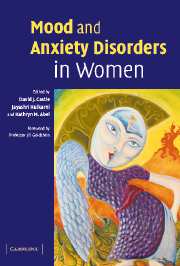
- Cited by 1
-
Cited byCrossref Citations
This Book has been cited by the following publications. This list is generated based on data provided by Crossref.
MCCAULEY, K. ELSOM, S. MUIR-COCHRANE, E. and LYNEHAM, J. 2011. Midwives and assessment of perinatal mental health. Journal of Psychiatric and Mental Health Nursing, Vol. 18, Issue. 9, p. 786.
- Publisher:
- Cambridge University Press
- Online publication date:
- August 2009
- Print publication year:
- 2006
- Online ISBN:
- 9780511543647
- Subjects:
- Psychiatry and Clinical Psychology, Medicine, Psychiatry




